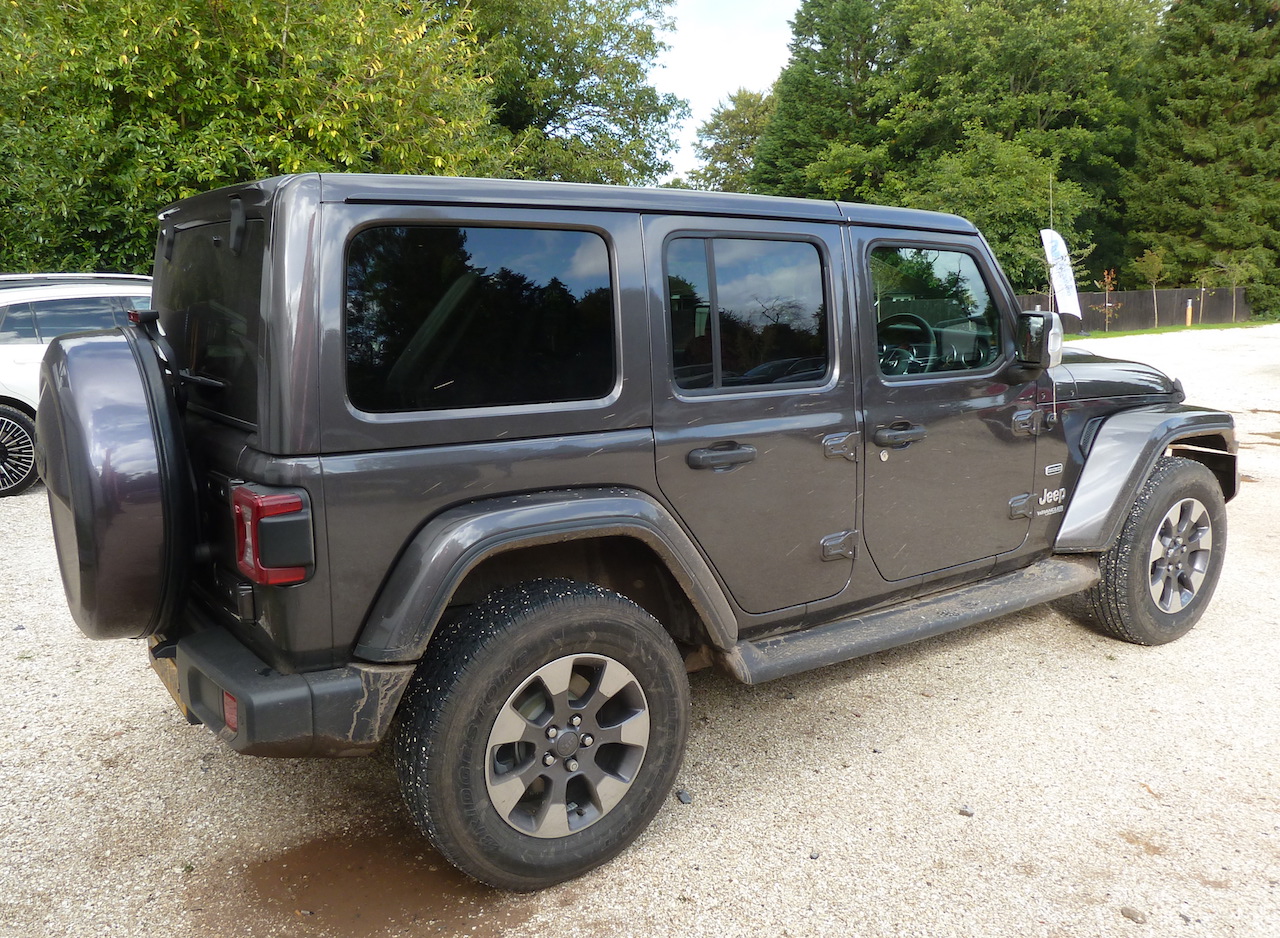 I have always valued, and enjoyed, the annual SMMT Test Days, arranged to provide accredited motoring writers with the chance to test drive a selection of new models from cross the spectrum of manufacturers.
I have always valued, and enjoyed, the annual SMMT Test Days, arranged to provide accredited motoring writers with the chance to test drive a selection of new models from cross the spectrum of manufacturers.
(All words and photos by Kim).
Every year the Society of Motor Manufacturers and Traders (SMMT) holds an autumnal driving event for motoring writers from the south of the UK.
I always appreciate this day as it gives us automotive scribes the opportunity to catch up on the latest motor industry developments, and importantly for brief test-driving of new vehicles from a range of car manufacturers, on the same day and in similar weather and road conditions. It also provides a chance to meet and talk with our motor industry public relations colleagues, and fellow writers.
My impressions follow, of the cars I drove at the 2019 ‘Test Day South’…
In each case the test drive was necessarily brief, but useful nonetheless…
In addition to driving the vehicles as outlined below, I was also passenger in a test drive of the Bentley Bentayga SUV (said to be the fastest SUV available), which was being driven by my colleague Chris Adamson. I won’t steal Chris’s thunder on this but will just say that his report on this model will be featuring soon on Wheels-Alive…
VOLVO XC60 B5 AWD R-Design Auto
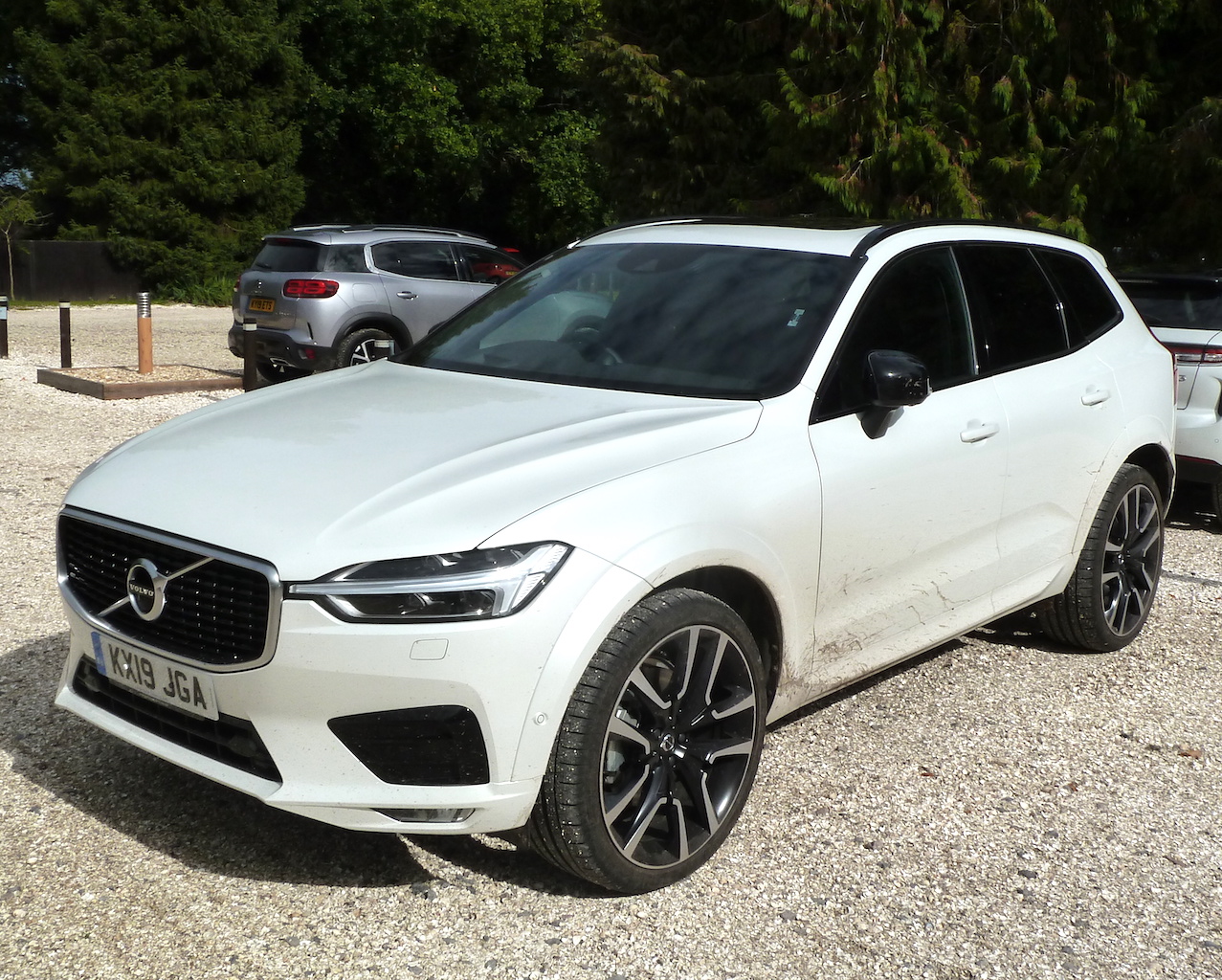 Volvo’s current line-up is broad-based and much respected, including the latest XC60 models. These five seater ‘Crossover SUVs’ look and feel well-built, and whichever version is chosen promise to provide good performance and reasonable fuel consumption.
Volvo’s current line-up is broad-based and much respected, including the latest XC60 models. These five seater ‘Crossover SUVs’ look and feel well-built, and whichever version is chosen promise to provide good performance and reasonable fuel consumption.
My test car for my first drive of the day was in the all wheel drive, mild hybrid diesel-powered XC60 B5 R-Design Pro version. While the diesel engine is the prime mover, the ‘mild hybrid’ electric propulsion aspect aims to improve fuel consumption and reduce missions, while also enhancing performance.
It’s a spacious vehicle, with generous accommodation for five adults, and a practical load space providing between 505 and 1,432 litres (17.03 and 50.57 cu.ft) capacity, depending on seating configuration.
While the XC60 range starts at £37,785 (for the Premium Momentum version), moving up the range or adding a few options soon sees the price go north of £40,000, with associated punitive road tax implications for the early years of ownership… Having said that, equipment levels are good on all versions, and the R-Design specification level (applicable to my test vehicle) includes a ‘Sport chassis’, 19 inch diamond-cut aluminium alloy wheels, a special grille, nubuck textile/Fine Nappa leather upholstery, a 12 inch display and other features.
The price tag on my test car was a hefty £59,135, loaded from a starting point of £50,960 by optional extra-cost niceties that included a Bowers and Wilkins Smartphone Integration and Sensus Connect with Premium Sound pack (£2,500), the ‘Xenium’ pack comprising a power glass tilt/slide sun roof, parking camera with 360 degree Surround View, Park Assist Pilot and 4-Zone Electronic Climate Control including cooled glovebox (total, £2,000), the multi safety system ‘Intellisafe Pro’ pack (£1,500) and a Convenience pack including power folding rear seat head rests, a 250 volt/150 watt 3 pin plug socket in the centre console, a front tunnel net pocket and ‘puddle’ lamps (£200 for this lot). Another £1,000 was added for the special 22 inch sports wheels and tyres, plus £975 for ‘Premium Metallic Paint’.
So it’s not cheap but certainly the fit and finish throughout the car was excellent, and I found the car smooth-running, quiet and comfortable (seating-wise and suspension) on my brief tour that took in a mixture of main A roads, meandering B roads and country lanes.
The Volvo handled well too, feeling sure-footed and responding instantly to the helm.
Five separate drive modes, selectable by a convenient rotary control in the centre console, are incorporated into the drivetrain set-up, including ‘Eco’ (‘Efficient’ drive), ‘Comfort’ (for everyday use), ‘Individual’ (personal driving preferences can be chosen), ‘Dynamic’ (for high performance) and ‘Off Road’.
During my test run I tried each of these (apart from the ‘Off Road’ setting) and certainly the drive responses were sharpened with the Dynamic mode selected, but I suspect that in normal use the Eco or Comfort modes would be fine for most drivers. Even with either of these selected the car seemed eager to perform and cruised happily at higher speeds.
VERDICT
A competent vehicle, practical for family use, enjoyable to drive and with all wheel drive for all year round peace of mind. The options selected need to be carefully chosen or the initial quoted price of the car can soon rocket upwards…
Wheels-Alive Very Brief Tech. Spec:
Volvo XC60 B5 AWD R-Design Auto
Price: £50,960 (as tested, including options, £59,135).
Engine: 1969cc four cylinder mild hybrid turbocharged diesel, 235 hp @ 4,000 rpm; 480 Nm (354 lb.ft) torque @ 1,750 to 2,250 rpm.
Transmission: Eight speed automatic; all wheel drive.
Performance:
0-60 mph: 6.7 sec.
Top speed: 137 mph.
Emissions, CO2: 142 to 151 g/km.
Fuel consumption (WLTP Official figure):
‘Combined’: 39.2 to 46.3 mpg.
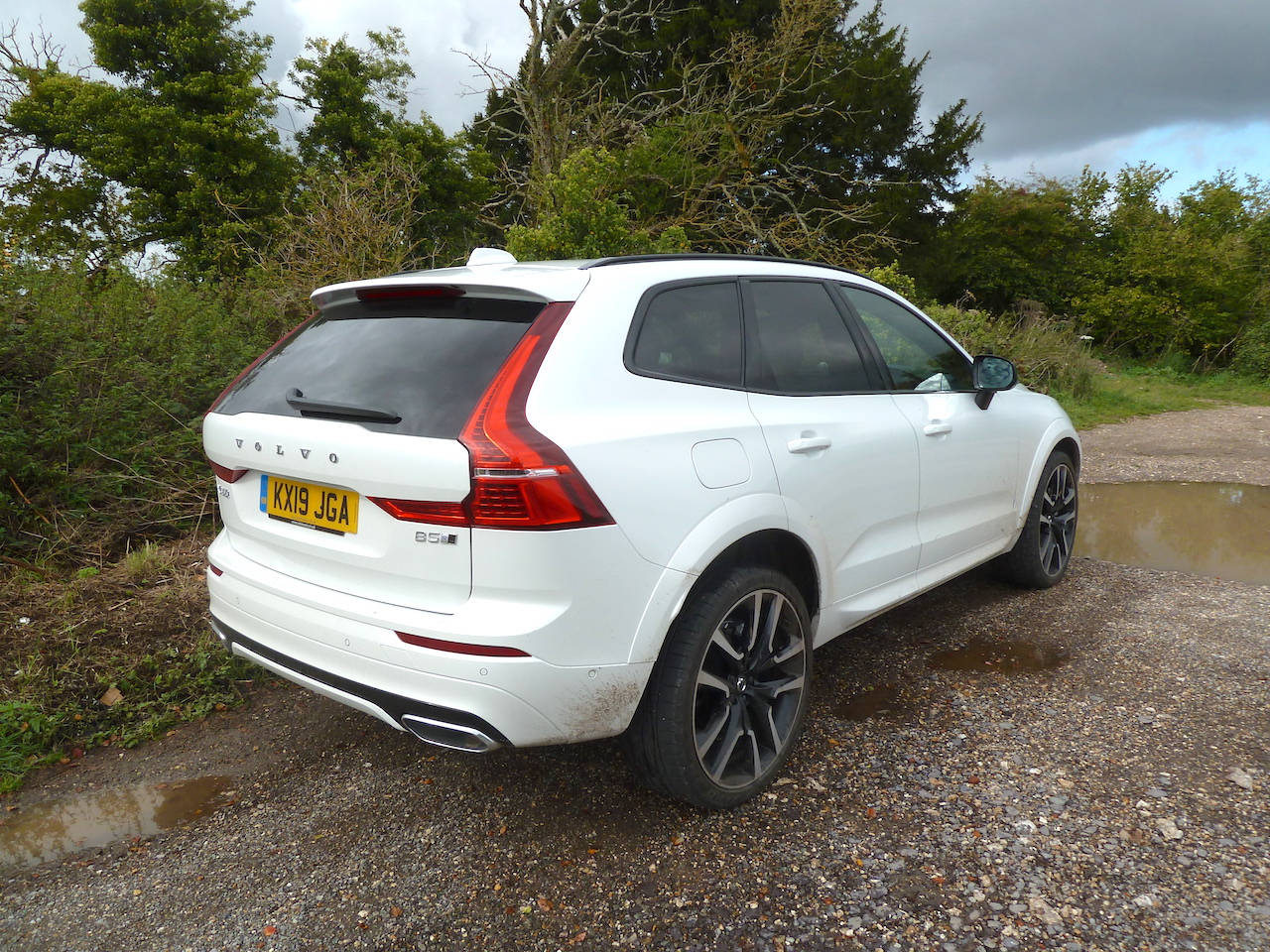
TAXI! London Electric Vehicle Company (LEVC) TX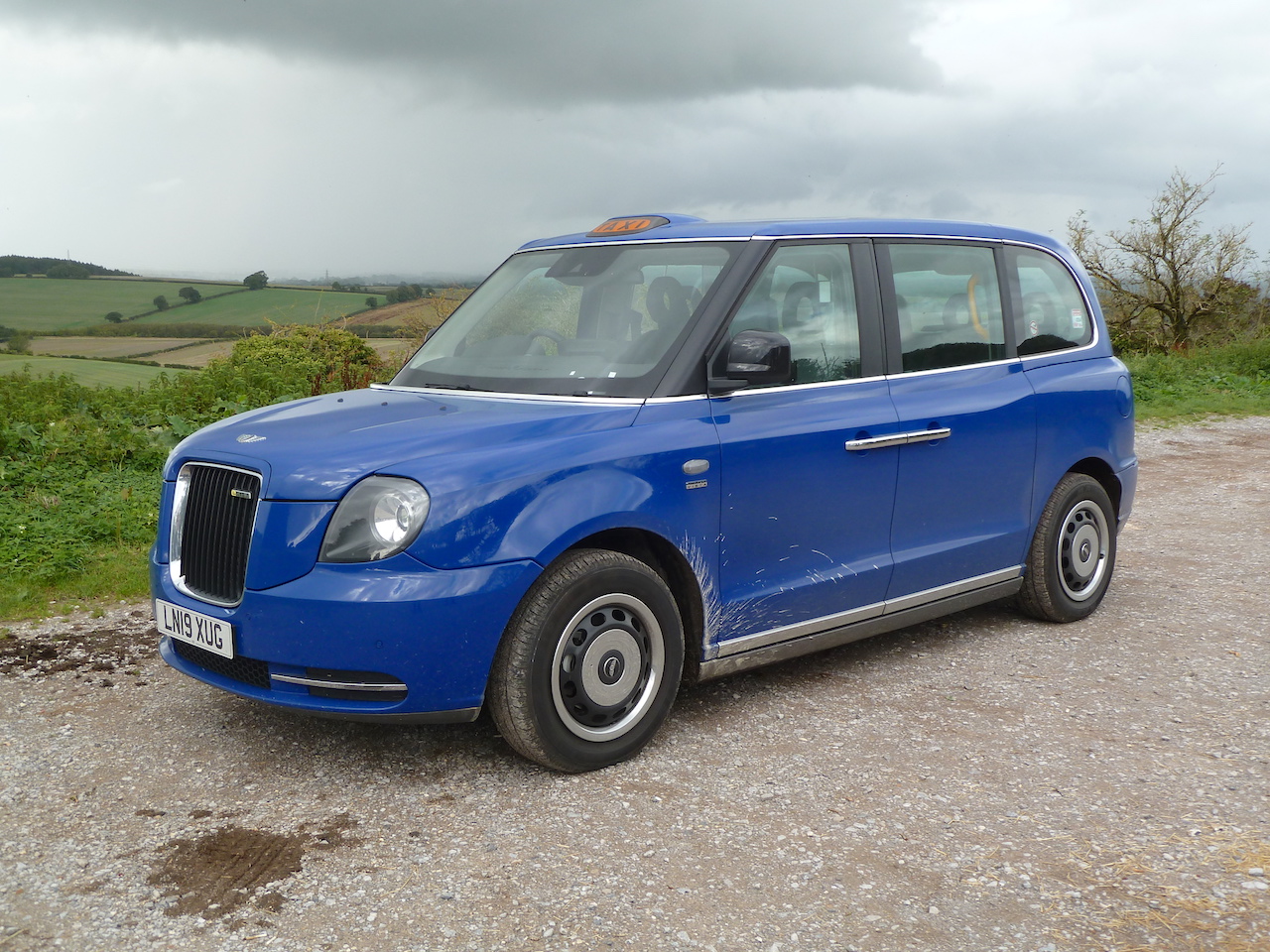
There is no doubt that in the near future, electrically-powered vehicles of all types will predominate, especially in urban situations, and taxis are no exception.
When given the chance to sample the London Electric Vehicle Company’s TX taxi, I was keen to drive it and interested to find out about the ‘eCity’ technology behind the vehicle, and how it would drive in real-world situations.
The parent company of the LEVC is the Chinese organisation Geely, which also owns Volvo, and which also explains why, when getting behind the wheel of the TX, many of the driver controls have similarities with those of the Volvo XC60 (that I had stepped out of, immediately before stepping into the TX!).
However, first things first, let’s look at the vehicle’s design and structure…
This taxi has been designed for the job, and is said to be the world’s first purpose-built electric taxi. It’s also produced in Britain, in what LEVC says is the only major car plant in the UK dedicated to electric vehicle production (and they will be building electrically-powered commercial vehicles very soon, as well as taxis).
The TX incorporates a new, lightweight bonded aluminium structure, helping to offset the weight of the necessary batteries, motors, inverters and cabling. It is powered by a 110kW electric motor, providing a claimed 80 miles on a full battery charge of the lithium-ion battery, but this is supplemented by a ‘range extender’ 1.5 litre petrol engine, which can extend the total operating range to 377 miles.
Interestingly, before my test drive I was advised that the vehicle always uses the electric drivetrain to propel the vehicle, so in effect, even when the petrol motor is running there is no direct connection between the petrol engine and the driven wheels.
Importantly, the battery is covered by a five year unlimited mileage warranty (the rest of the vehicle has a three year/120,000 mile warranty), and its longevity is helped by an ‘intelligent’ battery management system. Notably this aims to keep the battery at its optimum operating temperature, and avoids overheating which can accelerate the battery’s ageing process. In fact the battery is said to be built to last for the life of the vehicle.
As a wider illustration of the depth of thinking that has gone into this vehicle, it features a total of more than 40 control systems, including the cooling system specifically designed for the battery.
Incidentally, the makers have also (intentionally) made the battery as difficult to remove as possible by unauthorised persons who might wish to steal it…
TX battery recharging can be carried out at home (and operators can install a 7kw ‘Smart’ home charger wall box unit, at a cost of £359 in England (but £59 in Scotland!), and it is suggested that a typical overnight charge up will cost around £3 – or less if off-peak electricity is available.
In addition, when required the vehicle’s battery charge level can be rapidly boosted at on-street charging points, and about 60 per cent of the battery’s charge level can be restored in 45 minutes or so, giving another 50 miles driving range on electric power only.
The vehicle can be recharged at nearly all public charge points, whether of the ‘slow’, ‘fast’ or ‘rapid’ (50kw) variety.
Passenger and driver convenience
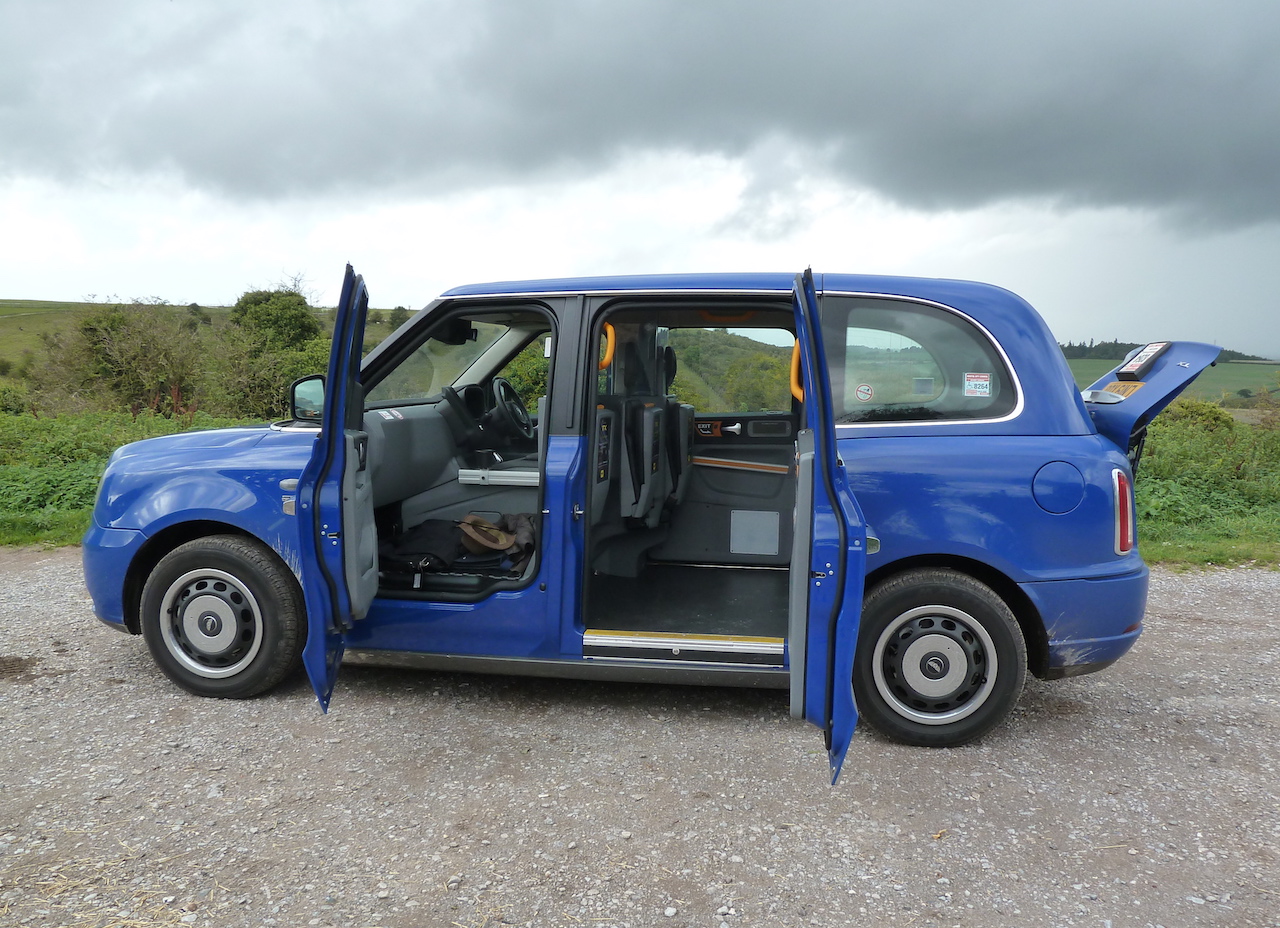 Of course taxis are built for transporting people, and the TX is certainly versatile, with six passenger seats within a tall, spacious compartment, reached via wide-opening ‘carriage’ doors. Notably too, there is an inbuilt ramp, a forward-facing wheelchair installation, and a clever swivelling seat adjacent to the left-hand rear door, enabling less agile passengers to sit on the seat directly from the pavement, and the seat then rotates back into the vehicle.
Of course taxis are built for transporting people, and the TX is certainly versatile, with six passenger seats within a tall, spacious compartment, reached via wide-opening ‘carriage’ doors. Notably too, there is an inbuilt ramp, a forward-facing wheelchair installation, and a clever swivelling seat adjacent to the left-hand rear door, enabling less agile passengers to sit on the seat directly from the pavement, and the seat then rotates back into the vehicle.
Luggage is carried on a platform accessed by the left-hand front door (the small compartment at the rear of the vehicle accommodates the charging lead etc.).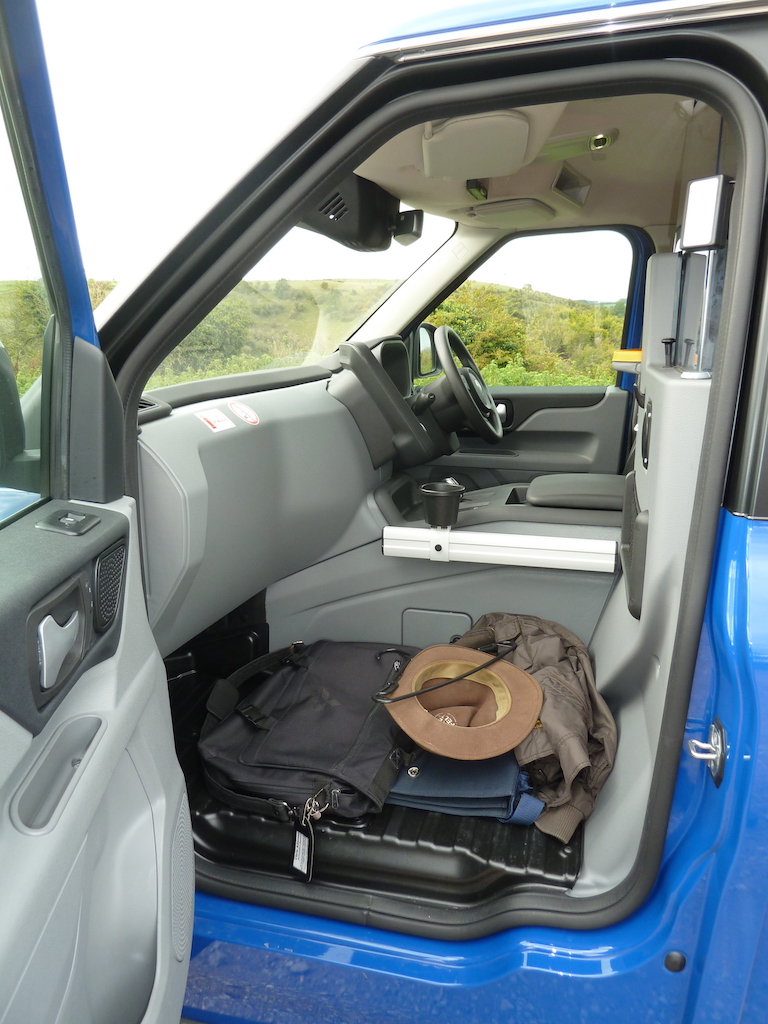
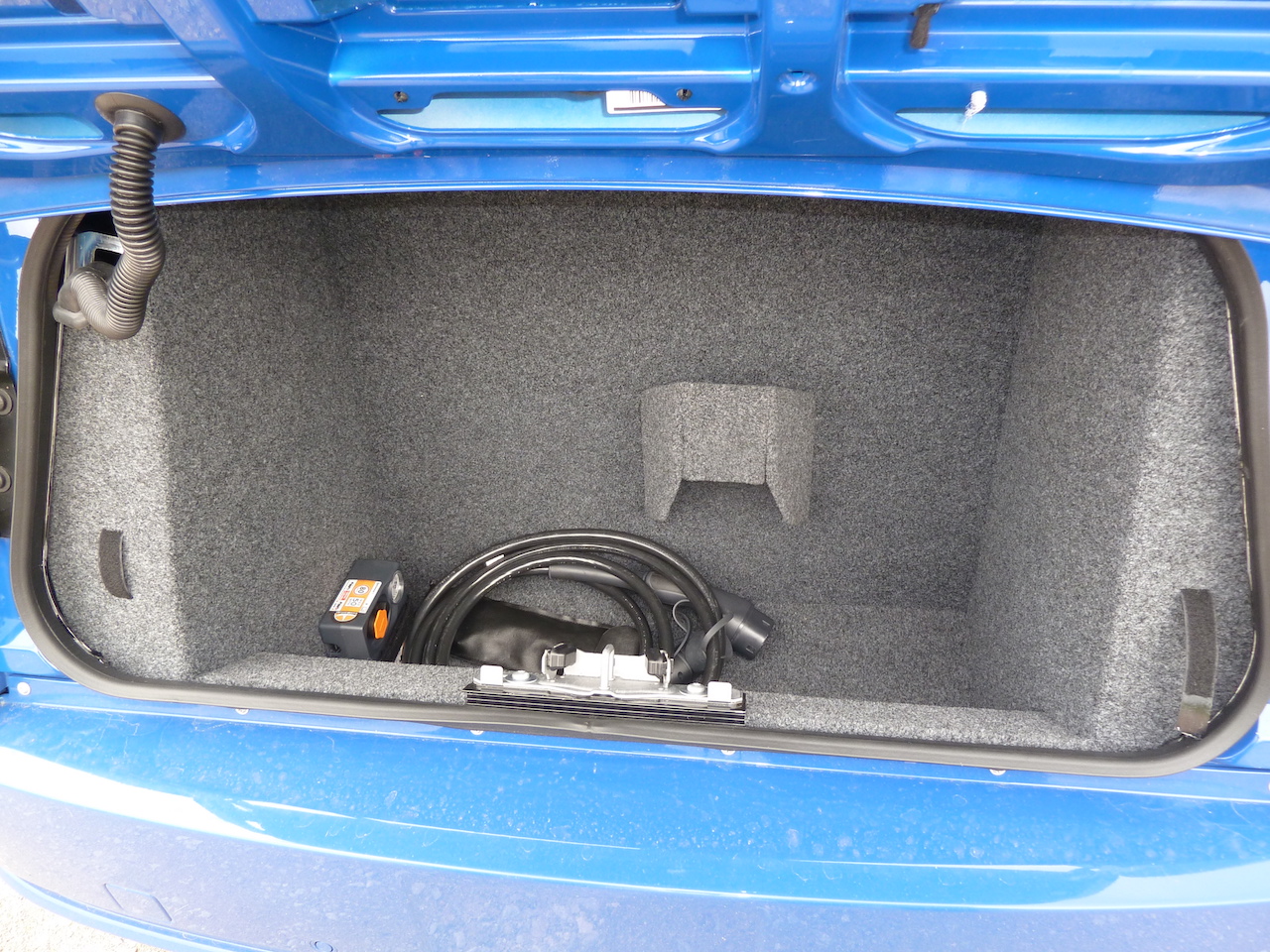 Within the passenger compartment are found two USB charging points, a 230 volt AC power socket for laptops, on-board wi-fi and a panoramic sun roof.
Within the passenger compartment are found two USB charging points, a 230 volt AC power socket for laptops, on-board wi-fi and a panoramic sun roof.
It should be mentioned that safety systems abound, including an array of accident avoidance systems (including ABS, EBC and ESC stability systems) and driver assistance technology (speed assistance, autonomous emergency braking and lane departure warning plus forward collision warning). This is in addition to occupant protection measures involving the latest technology, and a strong, rigid body shell said to provide crash protection to the highest international standards, plus three-point ISOFIX seat belt mounting points, energy-absorbing headrests, wheelchair restraints to ISO 10542 standard, and multiple airbags for the driver and passengers.
In addition, when designing the vehicle, the LEVC says that it has applied quality and refinement targets benchmarked against premium MPVs, rather than typical ‘van-derived’ taxis.
The vehicle has also been developed using a “TaxiDur” test regime, so that components such as the rear door hinges undergo test cycles typically 10 to 20 times longer than on normal passenger vehicles.
Final durability proving took place over more than a million miles in a variety of demanding conditions.
Driver convenience and comfort has not been ignored, and the driving compartment feels spacious, with logically laid out controls. Standard features include adjustment for the seating and steering wheel, a large central dash display, with a high-resolution LCD screen, and storage compartments within the cab.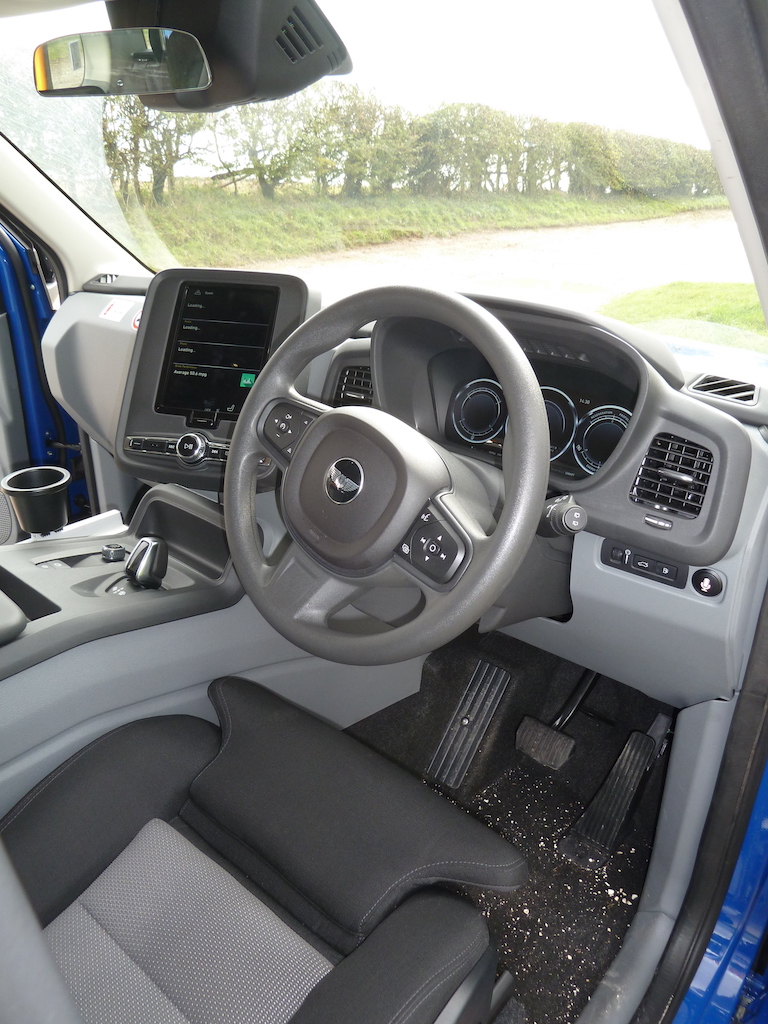
For safety and security there’s a partition screen between the driver and passengers, but a digital intercom system enables communication to take place between the two compartments.
Three drive modes are available…
‘Pure’ means that the vehicle is propelled just by the electric motor, with driver warnings when the battery charge drops to a critical level.
‘Smart’ mode automatically engages the range extender petrol engine when the system senses that this is more appropriate – for example at higher road speeds when pure electric propulsion is less efficient.
‘Save’ mode is engaged by the driver to bring into play the range extender engine to conserve the available battery power at its current level. This can be used, for example, if the driver is commuting from his or her home to and from a city, so that battery energy can be conserved for emission-free driving within the city.
A regenerative braking system pumps power back into the battery when the vehicle is ‘coasting’ or braking.
The turning circle is necessarily and deliberately ‘tight’, with the front wheels swivelling through 63 degrees (compared with a typical SUV figure of 38 degrees) and the taxi can turn in a road between two walls no more than 8.5 metres (around 28 feet) apart.
On the Road
Since the Test Day base was in a country district, most of my test drive was necessarily carried out on out-of-town roads, although it did include some stop-start driving in a local small town.
I carried a ‘fare’ in the form of a fellow motoring writer colleague passenger, and he reported that the ride quality, seat comfort, available space and visibility, as judged from the rear of the vehicle, were good.
From the driving seat I too enjoyed the drive. The driver information systems were clear and easy to assimilate (including those relating to battery power and electrical operation) and I found that my view of the road ahead and around the vehicle was very good.
Unfortunately by the time my turn came to drive the taxi, previous drivers on the day had exhausted all available battery power, but since the range extender engine drives through the electric propulsion running gear, a good impression could still be gained of the vehicle’s overall dynamic qualities.
The prodigious low speed torque plus the smooth and lively acceleration were welcome, as was the vehicle’s refined and quiet cruising on the open road. I found that the ride and handling qualities were better than I had expected, even in an out-of-town environment.
Tight turning and parking manouvres were easily accomplished, even though the vehicle is quite large; the excellent turning circle and good visibility helped.
How much?
The ‘On The Road’ price of the TX Vista is £57,099 after the deduction of the ‘Taxi Grant’ of £7,500 under the auspices of the Office of Low Emission Vehicles (OLEV). The vehicle is available on a monthly payment plan…
VERDICT
Impressive; spacious, practical, comfortable, with cleverly-thought out features, and inexpensive to operate, with low overall emissions.
Despite some question marks over nationwide charging point availability (etc.) electric propulsion is a reality that is with us already, and (especially) makes much sense for vehicle use within towns and cities, where tailpipe emissions need to be lowered/eliminated. The potentially much lower running costs of running an electric TX taxi (including the cost of electricity versus diesel, plus long service intervals of 25,000 miles) help to offset the initial purchase price.
Wheels-Alive Very Brief Tech. Spec:
LEVC TX
Price: £57,099 (after deduction of £7,500 OLEV Taxi Grant).
Propulsion: 110 kw electric motor (torque 255 Nm or 188 lb.ft) plus ‘range extender’ 1.5 litre petrol engine (‘automatic’ transmission).
Performance:
Top speed: 80 mph (Transport for London restriction).
Emissions: CO2 29g/km(but only if range extender is in use)
Fuel consumption (Official figures):
‘Combined’: 282.5 mpg (range extender, 36.7 mpg).
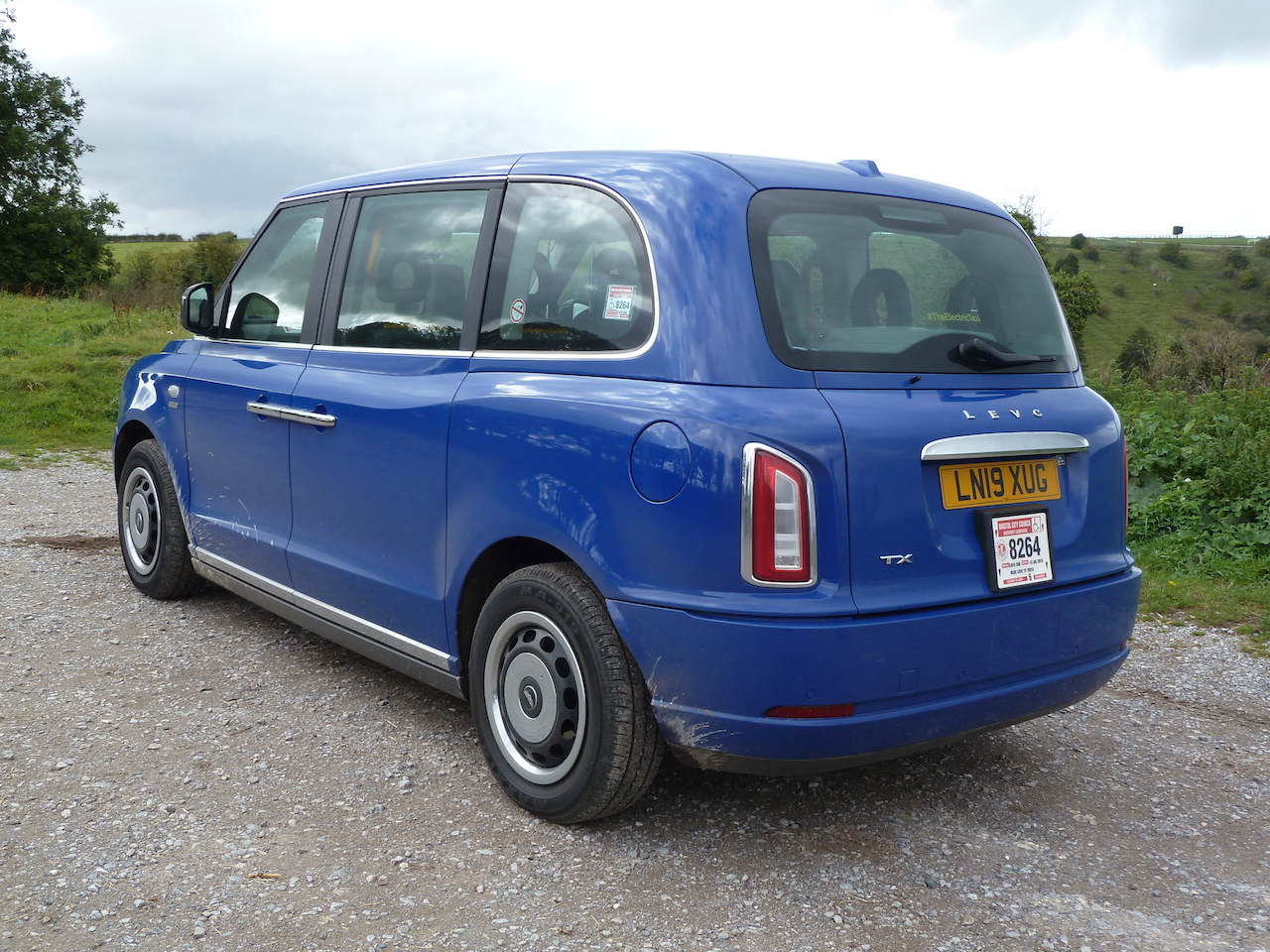
Jeep Wrangler Overland four door 2.2 Multijet-II (200)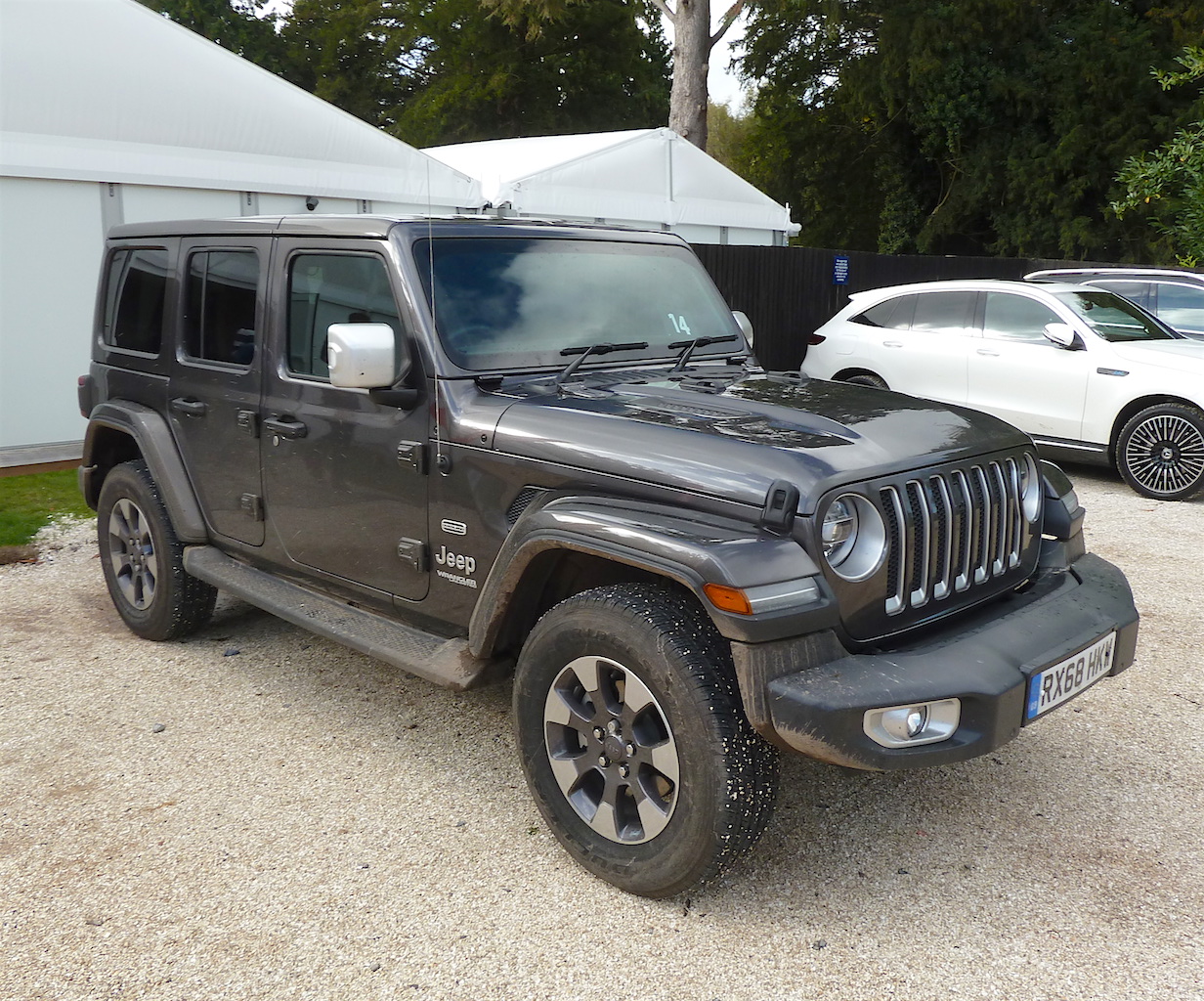
To me, and to many car enthusiasts, it is reassuring that throughout its generations over many years the Jeep Wrangler has stayed true to its tough image and has retained its unmistakable and uncompromising ‘off road hero’ appearance. The unashamedly angular styling and deliberately high ground clearance hint at proven competence in difficult ground conditions too.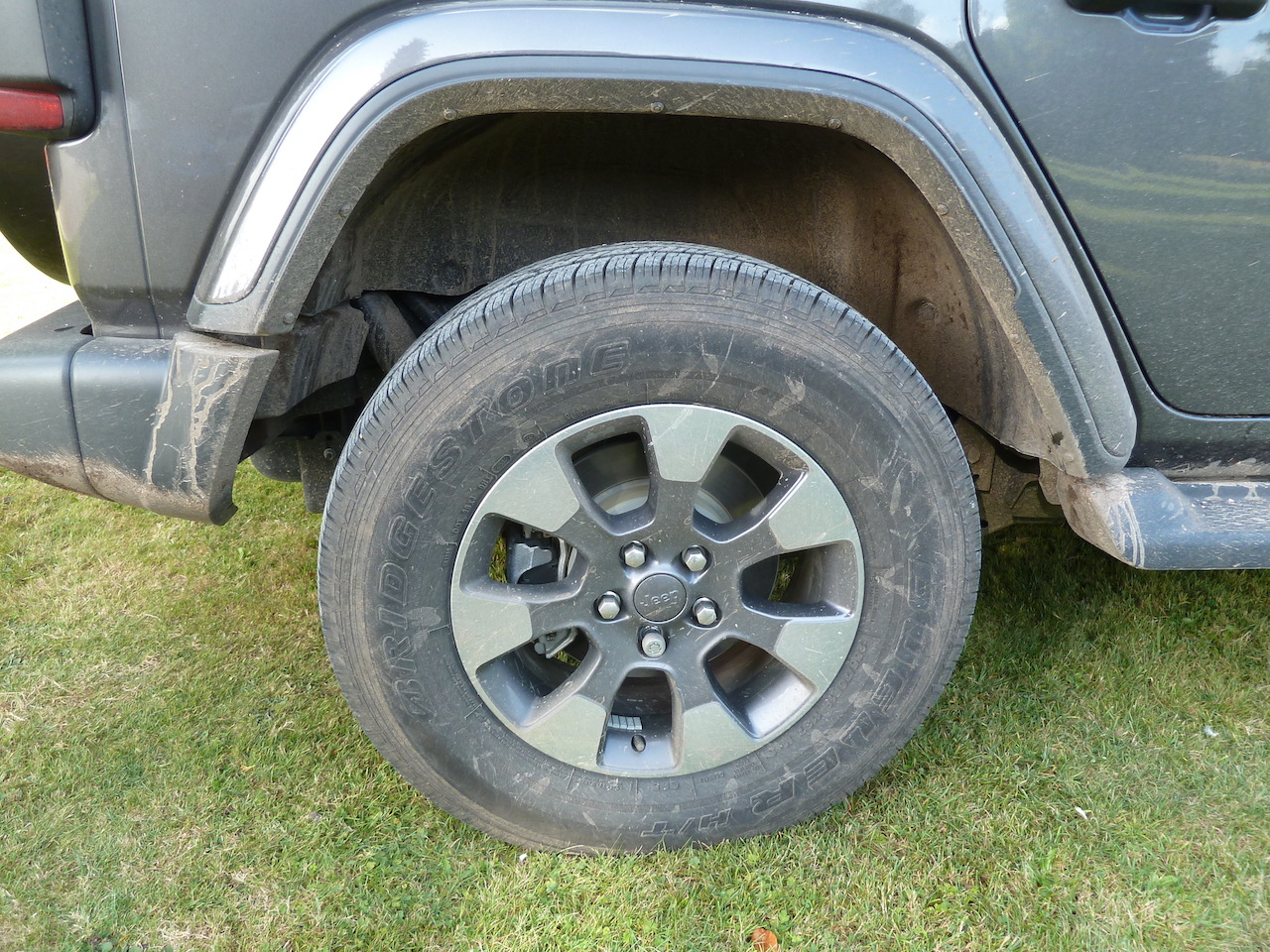
However, not so obvious from the tough-looking exterior is that today’s Wranglers are very well-equipped and also incorporate a multitude of up-to-the-minute systems to ensure effective safe motoring on tarmac as well as in off-road situations (where the excellent wheel articulation and clever, durable ‘Command-Trac II’ all wheel drive system – with Hill Descent Control – help ensure that these vehicles just keep going, in the most challenging of conditions).
It would take a fair-sized book to adequately describe all the features of the drivetrain and ‘body on frame’ chassis of this sophisticated vehicle, developed with the help of decades of experience in building effective and respected off-road vehicles. However, suffice to say that this Wrangler is equipped with coil spring suspension (with high pressure gas charged shock absorbers) designed to take severe off-road use, exceedingly tough front and rear drive axles and electro-hydraulic power steering. It is also capable of towing a braked trailer of up to 2,495 kg ( 5,501 lb), and bristles with up-to-the-minute safety systems.
Among a wealth of ‘upmarket’ interior features, just as examples… standard equipment on the Overland includes McKinley leather upholstery, a seven inch TFT instrument cluster with Vehicle Information Centre (VIC), Uconnect Live 8.4 inch Radio Nav system with DAB, Voice Command and Smartouch Navigation System, Apple CarPlay and Android Auto, a nine speaker plus subwoofer, 552 Watt Alpine audio system, multi-adjustable front seats, cruise control and speed limiter, and an automatic dual-zone climate control system.
On climbing aboard the Wrangler (and it is, of course, high off the ground), the welcoming interior gives the impression of being built for comfort, and to last.
The controls are logically laid out and I found these and the comprehensive instrumentation/driver information screen to be easily to assimilate.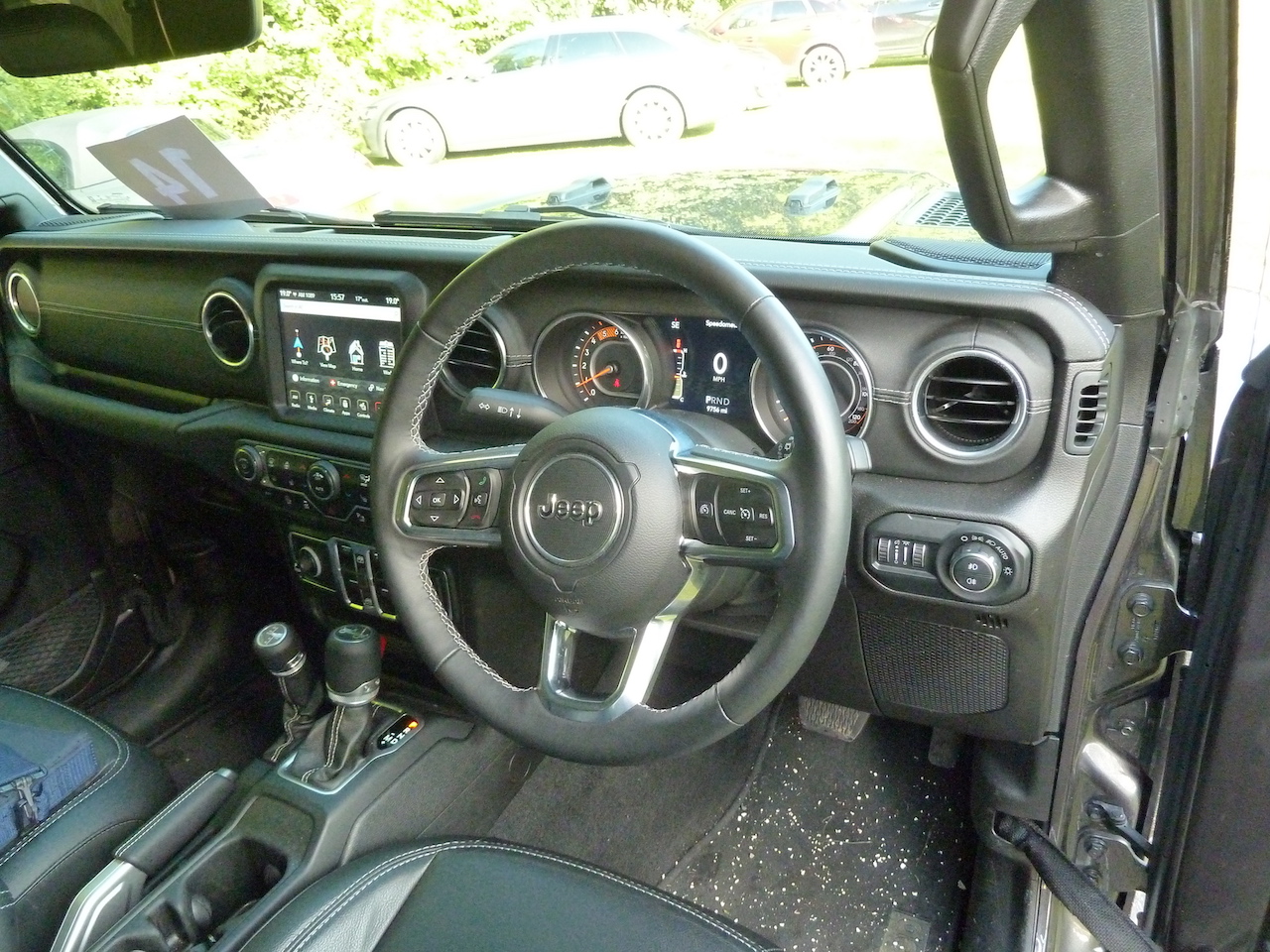
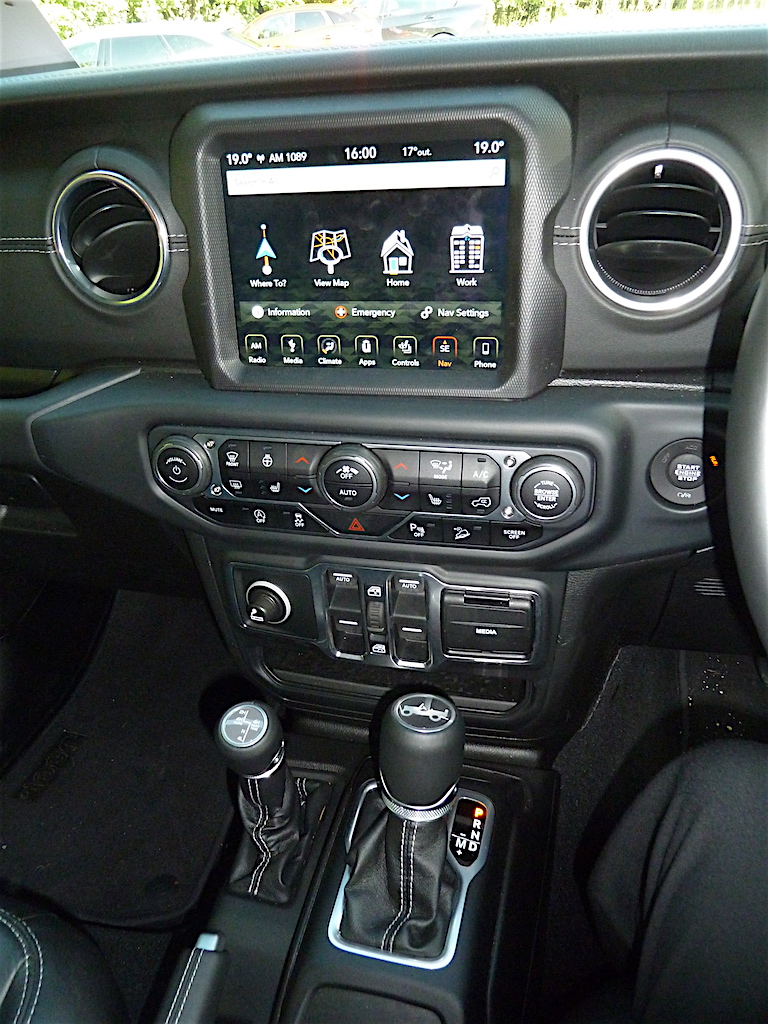 There is generous room for all occupants, including those in the rear seats – head room, shoulder room and knee room dimensions are ample.
There is generous room for all occupants, including those in the rear seats – head room, shoulder room and knee room dimensions are ample.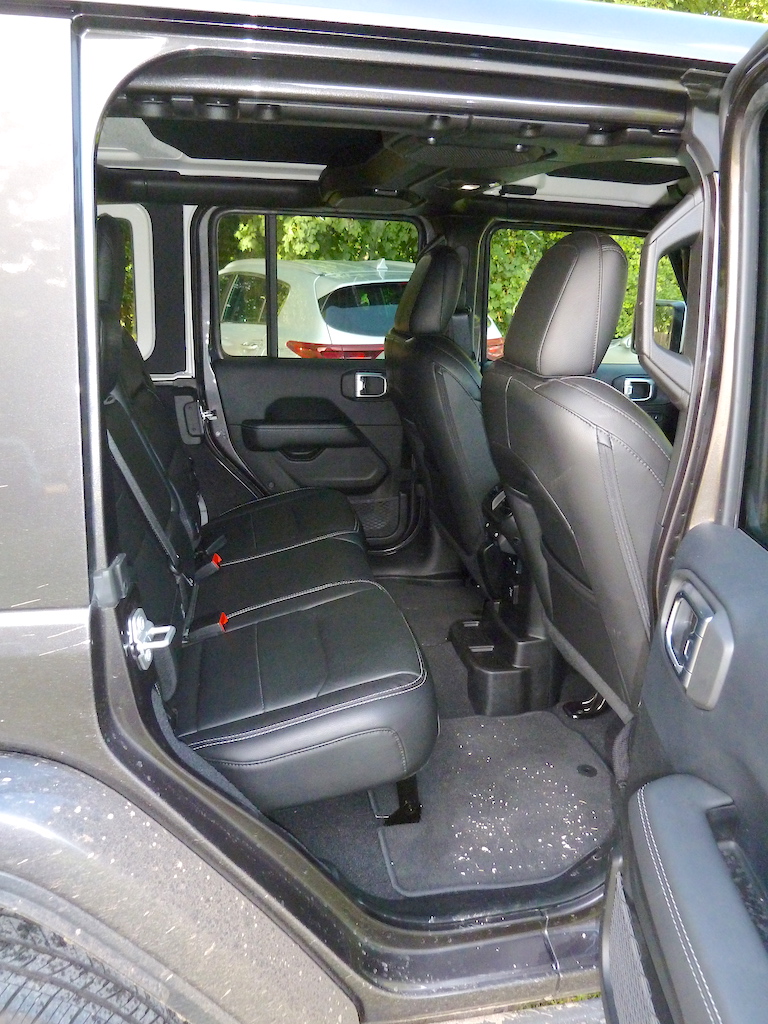
The luggage compartment is practical too, with the side-opening rear door giving access to a flat-floored and spacious compartment.
My test car was powered by the 2.2 litre four valves per cylinder 200 hp MultiJet II four cylinder turbodiesel engine, fitted with a stop start system and delivering commendable fuel consumption figures for a large four wheel drive vehicle; the official Combined figure is a very good 36.7 mpg. No doubt this is helped by the effective eight speed automatic transmission, enabling the vehicle always to be in an appropriate gear for the prevailing driving conditions.
I was only able to drive the test Wrangler for a relatively short time and entirely on rural Hampshire roads (as opposed to off-roading), but I must confess that it was a revelation to me in terms of its nimbleness for a large vehicle, its positive feel and enjoyable handling on twisting roads, its lively performance and overall refinement. Admittedly it had been a while since I last drove a Wrangler but this latest version impressed me greatly. If I am honest I had been expecting a less involving and more ‘vague’ feel in on-road motoring.
There was power and torque available in plenty, and the auto transmission changed seamlessly between ratios, both up and down through the box. I found too that it was a relaxing and comfortable vehicle in which to travel at higher speeds. The ride comfort and the driving seat proved to be accommodating during my on-tarmac driving session. The brakes were spot-on too.
I also found it easier than anticipated to manoeuvre this Jeep in tight situations. That said, it is still a large vehicle and plenty of space is required in which to park it – and to accommodate it at home.
The Wrangler comes with a five year warranty plus three years servicing, and five years roadside assistance.
VERDICT
An extremely competent and likeable iconic machine, built using the benefit of Jeep’s many years of experience producing all wheel drive vehicles, but also incorporating a wealth of today’s technologies in terms of safety equipment, drive systems, comfort and refinement, not to mention fuel consumption.
Price: £48,365 (as tested, including optional Granite Crystal metallic paint costing £775, £49,140). Engine: 2143cc four cylinder turbodiesel (Euro 6d-TEMP compliant), 200 hp @ 3,500 rpm; 450 Nm (332 lb.ft) torque @ 2,000 rpm. Transmission: Eight speed automatic; full time four wheel drive. Performance: 0-62 mph: 9.6 sec. Top speed: 112 mph. CO2 emissions: 202 g/km. Fuel consumption (Official figures): Urban: 29.1 mpg. ‘Combined’: 36.7 mpg.Wheels-Alive Very Brief Tech. Spec:
Jeep Wrangler Overland four door 2.2 Multijet-II (200)
